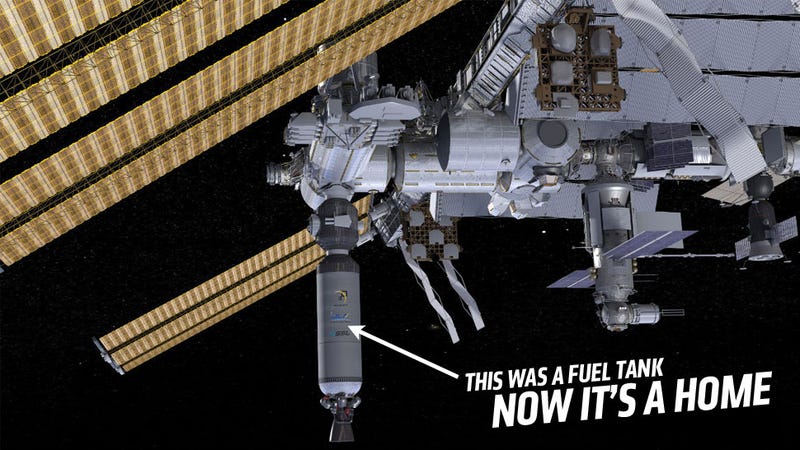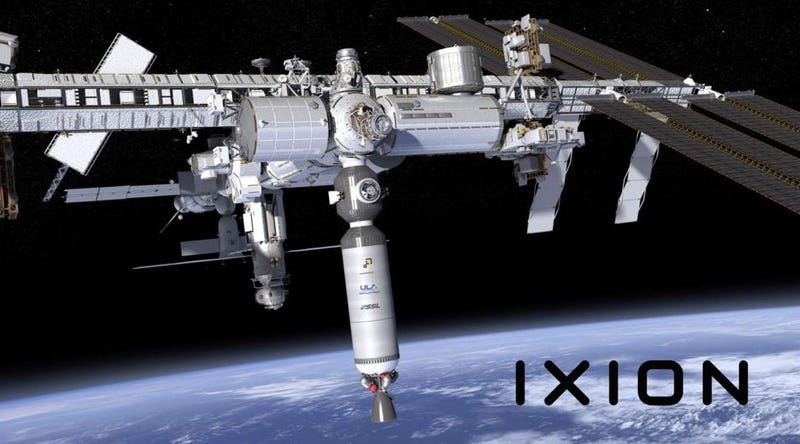New Mars Forums
You are not logged in.
- Topics: Active | Unanswered
Announcement
#1 2016-08-25 18:04:12
- Excelsior
- Member
- From: Excelsior, USA
- Registered: 2014-02-22
- Posts: 120
Their back... NASA revives the wet workshop concept
NASA Wants To Make Space Habitats From Orbiting Rocket Fuel Tanks

The idea of re-purposing an (ideally) empty rocket fuel tank and turning it into a space habitat has been around for a long time, because it’s a really appealing idea. America’s first space station, Skylab, was designed from a Saturn V rocket’s upper-stage fuel tank, albeit one that was never filled with fuel. Now NASA has selected a company to develop habitats made from used rocket fuel tanks.
The company is actually a partnership called Ixion, and they’re formed from NanoRacks (who already develops internal hardware for space stations) and Space Systems Loral. Ixion was chosen to be part of NASA’s NextSTEP partnership that works with private companies to develop new space technologies.
The exciting thing about what Ixion will attempt to do is that their feasibility study will focus on turning used rocket stages into habitats while in orbit. Right now, with the exception of Elon Musk’s SpaceX automated-landing Falcon 9 rocket stages, all spent rocket stages are just sent to burn up in the atmosphere, or, barring that, just float around aimlessly and uselessly in orbit.
Getting anything into space is a big deal, so the idea of all those huge, well-constructed aluminum cylinders just loafing about or burning into ash is pretty maddening. The ability to take a spent rocket stage and convert it, in situ, into a viable habitat would be a huge deal, and could possibly make space exploration and living a significantly less claustrophobic experience than it’s been since pretty much ever.
After some preliminary ground-based studies, here’s what Ixion’s goals are:
The Ixion Team proposes demonstrating this revolutionary, low-cost concept via the conversion of a Centaur rocket upper stage which will be attached to the International Space Station (“ISS”). After the converted Centaur upper stage is attached to the ISS, the Ixion Team will leverage the habitat as a proving ground for a variety of private sector activities leading to a new era in commercial low Earth orbit (“LEO”) utilization.
To do this, Ixion would use the launch of one of their Cygnus cargo re-supply modules. These are normally launched on Atlas-Centaur rockets, and the Centaur upper stages are discarded. Ixion would add a little module in between the Cygnus and the Centaur upper stage called a Mission Module, which will add all the stuff NASA wants and they need to make this work: docking module, equipment airlock, grappling points, and maybe some small maneuvering jets.
The good news is that even with this extra little module, everything still fits under the standard Atlas-Centaur launch fairing.
So, the Cygnus docks like for a normal mission, but has two extra modules: the mission module and the spent upper stage. The ISS’ robot arm grapples the hangers-on, and moves them to a docking port, where the mission module can dock. At this point, there’s now a nice big module docked, accessible through the mission module. They vent out any excess fuel, and then call Space Ikea to start delivering furniture to outfit it, or whatever they like to do.
This method gets you two payloads for one launch: a necessary re-supply module and the very much non-trivial bonus of a huge new space habitat to use. There’s some significant cost-savings here, and a lot of potential to grow the ISS (or other future stations) much more quickly and economically.
It’s about time we gave this old idea a real shot; I’m excited to see what comes of it.
The Former Commodore
Offline
Like button can go here
#2 2016-08-26 00:29:33
- Void
- Member
- Registered: 2011-12-29
- Posts: 9,070
Re: Their back... NASA revives the wet workshop concept
A variation of it would apply to a flight to Mars. First you live in a cramped quarters for a little while. Then you do your chemical burn, empty the booster, make it habitable. Now you have used your booster twice, keeping the initial weight of your interplanetary vehicle lower. Lets say that you get into your capsule, do the burn, and make your booster habitable. Maybe you are confined to just the capsule for 1 week, 2 weeks? People might be able to stand that, if they then had expanded quarters.
Is it possible that the root of political science claims is to produce white collar jobs for people who paid for an education and do not want a real job?
Offline
Like button can go here

